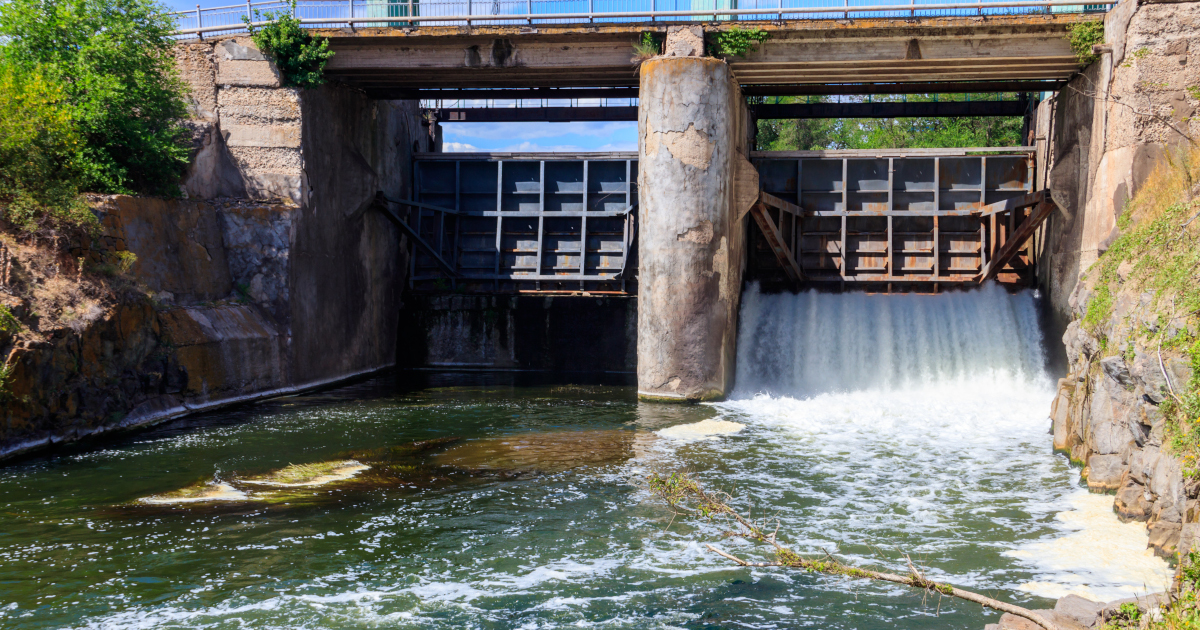
March 20, 2023 – Owners of property along navigable waterways in Wisconsin do not have a right to a certain water level along the property, the U.S. Court of Appeals for the Seventh Circuit has ruled.
In Kreuziger v. County of Milwaukee, No. 22-2489 (Feb. 13, 2023), the U.S. Court of Appeals for the Seventh Circuit held that the state’s interest in navigable waterways, which it holds in trust for the public, is superior to a riparian landowner’s interest in maintaining a certain water level along his or her property.
New Deal-era Dam
In 1938, Milwaukee County built a dam on the Milwaukee River, near the northern limit of Estabrook Park in the Village of Shorewood. The Milwaukee River is a navigable waterway.
According to the permit application that the county filed with the Wisconsin Public Service Commission, the purposes of the dam were:
Beginning in 1986, the county used the dam to make seasonal drawdowns of the river.
 Jeff M. Brown , Willamette Univ. School of Law 1997, is a legal writer for the State Bar of Wisconsin, Madison. He can be reached by
email or by phone at (608) 250-6126.
Jeff M. Brown , Willamette Univ. School of Law 1997, is a legal writer for the State Bar of Wisconsin, Madison. He can be reached by
email or by phone at (608) 250-6126.
When the county closed the dam’s gates in the spring, the river backed up and the water level upstream rose. When the county closed the dam’s gates in the fall, the water level upstream fell.
Riverfront Property
Brian Kreuziger and his wife bought a house on the river in 2000. The Kreuzigers’ house was located just upstream from the dam.
In 2009, the state Department of Natural Resource (DNR) ordered the county to either repair the dam or abandon it. The move touched off a political controversy and the filing of several lawsuits.
In 2017, the DNR granted the county permission to transfer ownership of the dam to the Milwaukee Metropolitan Sewerage District (District). In 2018, the district demolished the dam.
After the dam was demolished, the water level along the Kreuzigers’ property fell about four feet below the river’s ordinary summer high-water mark. The new water level was comparable to the water level that resulted when the county closed the dam’s gates in the fall.
Swampland Sparks Lawsuit
When the water went down after the dam was demolished, a ten-foot strip of swampy land between the Kreuzigers’ seawall and the water’s edge emerged.
Brian Kreuziger sued the District and the county in the U.S. District Court for the Eastern District of Wisconsin under 42 U.S.C. 1983.
Kreuziger claimed that the removal of the dam and the subsequent reduction in the water level along his property violated the Takings Clause of the Fifth Amendment to the U.S. Constitution and the Just Compensation Clause of the Wisconsin Constitution (Art. I, Section 13).
Both parties moved for summary judgment. The district court concluded that Kreuziger had no right to the continuation of a particular water level along his property and granted summary judgment for the defendants.
Kreuziger appealed.
Public Trust is Paramount
Writing for a three-judge panel, Chief Judge Diane Sykes pointed out that Kreuziger’s cased rested on the premise that he had a property right in a particular water level along his property.
But, she explained, under Wisconsin law the rights of landowners with land along navigable waterways are subordinate to the interests of the state under the public trust doctrine.
“Wisconsin holds the beds of its navigable lakes and rivers in trust for the benefit of the public, and riparian rights exist only insofar as they do not conflict with the public’s interest in preserving navigable waters,” Judge Sykes wrote.
Sykes also noted that under Wisconsin Supreme Court case law, the public trust doctrine is to be interpreted broadly to safeguard the public’s interest in navigation, recreation, and the enjoyment of the state’s lakes and rivers.
Case with Private Parties Distinguished
Kreuziger argued that under Smith v. Youmans, 70 N.W. 1115 (Wis. 1897), he had the right to have the water level along his property remain unchanged.
But Smith was distinguishable, Judge Sykes reasoned.
“That case dealt with a clash of rights among private riparian owners,” Sykes wrote. “This case involves the government’s interest in maintaining navigable waterways in the exercise of its responsibilities under the public trust doctrine.”
Government’s Interest is Superior
Judge Sykes concluded that the holding of the U.S. Supreme Court in United States v. Willow River Power Company, 324 U.S. 499 (1945), was controlling.
In Willow River, a utility company that operated a power plant on the St. Croix River sued after the federal government built a dam upriver, which lowered the water level at the plant and shrunk the plant’s capacity to generate power.
The Supreme Court rejected the company’s argument that it had a right to the previous water level, Sykes explained, and held that the company’s interest in the previous water level was nothing more than a privilege or convenience.
“When the government’s regulatory authority conflicts with a riparian owner’s interest in the surface level of a navigable waterway, the governmental interest is superior,” Judge Sykes wrote.
No Support in Case Law
Sykes also pointed out that Kreuziger had failed to name a case that supported his claim that he had a property right in maintaining a certain water level along his property.
“That’s not surprising; rivers frequently ebb and flow, and lower water levels as such have never been held to implicate a taking,” Judge Sykes wrote. “Quite the opposite – when a river recedes, a riparian owner’s rights expand proportionally.”
